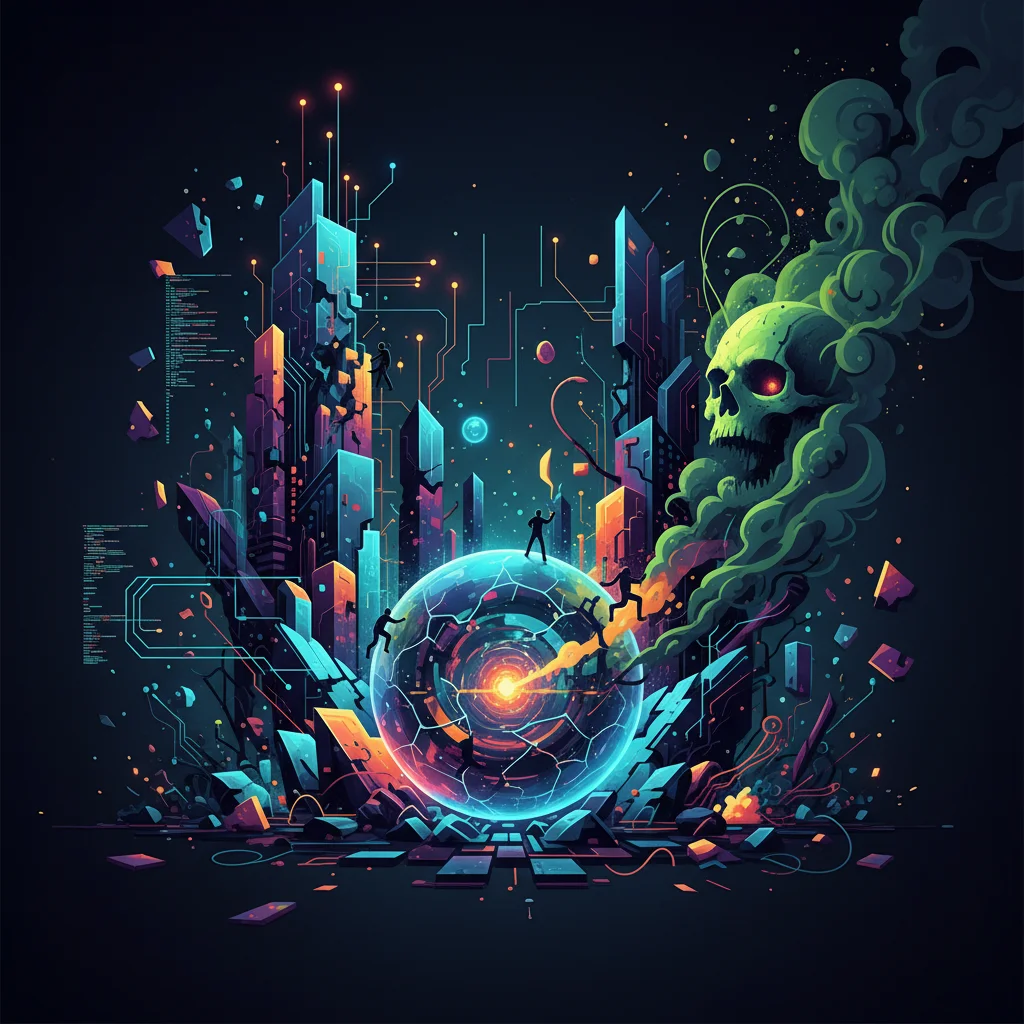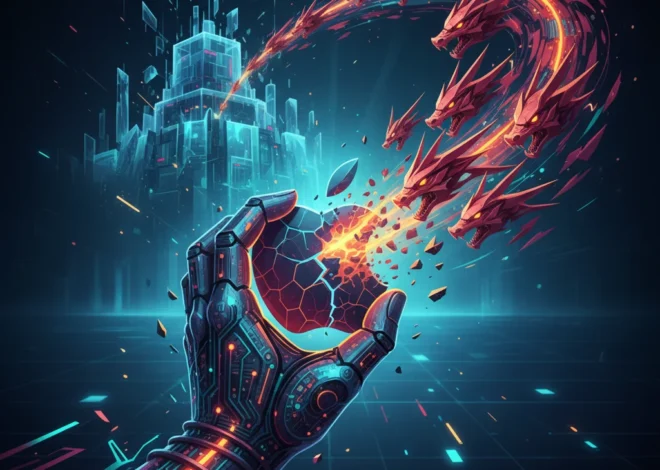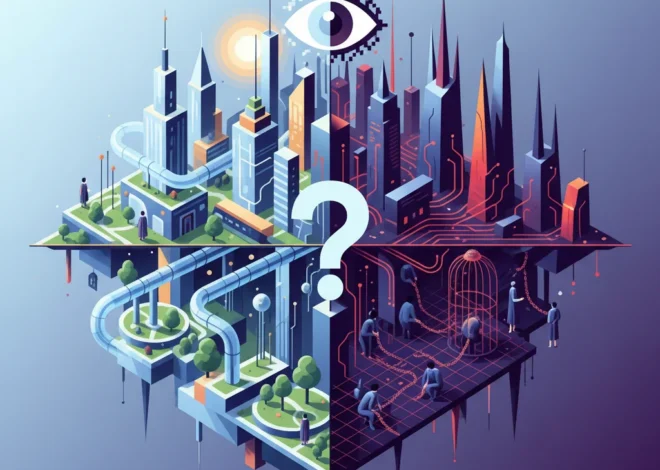
Beyond the Code: Is the Tech Industry Creating Its Own Toxic Legacy?
We stand at a remarkable moment in history. Technology, powered by brilliant minds and groundbreaking software, promises a future of unparalleled efficiency, connection, and discovery. We have artificial intelligence that can compose music, cloud infrastructure that connects the globe, and automation that streamlines our lives. For developers, entrepreneurs, and tech professionals, this is the golden age of innovation.
But what if there’s a hidden cost to this relentless progress? What is the unseen fallout from the “move fast and break things” philosophy? This is the critical question at the heart of a new investigative podcast season from the Financial Times, Untold: Toxic Legacy. While the term “toxic legacy” often conjures images of industrial smokestacks and chemical spills, the tech industry is creating its own long-lasting, often invisible, residues. These are legacies written not in the soil, but in code, data, and societal norms.
This isn’t just a story for boardrooms and regulators. It’s a conversation for every developer writing a line of programming, every startup founder choosing a growth strategy, and every professional deploying a new SaaS solution. Let’s pull back the curtain and explore the toxic legacies of the digital age—and, more importantly, how we can start building a better one.
The New Pollution: Data Breaches and Cybersecurity Nightmares
In the 21st century, data is the new oil. It fuels our economies, powers our machine learning models, and is the core asset for countless startups. But like oil, when it spills, the consequences are disastrous and far-reaching. The toxic legacy of poor data stewardship is a permanent stain on consumer trust and corporate reputation.
We’ve become almost numb to the headlines: millions of user records exposed here, sensitive personal information stolen there. But the numbers are staggering. According to IBM’s 2023 report, the average cost of a data breach reached an all-time high of $4.45 million (source). This isn’t just a financial figure; it represents a cascade of real-world harm—identity theft, financial fraud, and the erosion of personal privacy.
For SaaS and cloud-based companies, the responsibility is immense. They are the custodians of our digital lives. A single vulnerability in a widely used piece of software or a misconfigured cloud server can have a domino effect, impacting millions. This is where cybersecurity ceases to be an IT issue and becomes a fundamental pillar of corporate ethics. The legacy isn’t just a breach; it’s the lingering fear and distrust that follows.
Every decision, from the encryption standards used to the data retention policies enacted, contributes to a company’s legacy. Are you building a fortress to protect your users, or a house of cards waiting for the wind to blow?
The Trillion-Dollar AI Question: Are We in a Bubble or a Revolution?
The Algorithmic Shadow: The Unseen Bias in AI and Machine Learning
Artificial intelligence and machine learning are arguably the most powerful tools of our time. They hold the promise of solving immense challenges, from diagnosing diseases to optimizing global supply chains. Yet, this same power can create a deeply insidious toxic legacy: encoded bias.
AI models learn from the data we feed them. And if that data reflects the historical biases and prejudices of our society, the AI will not only replicate them but amplify them with ruthless, mathematical efficiency. We’ve seen this play out in numerous high-profile cases:
- Hiring tools that penalize female candidates because they were trained on historical data from a male-dominated industry.
- Facial recognition software that has significantly higher error rates for women and people of color.
- Loan-approval algorithms that perpetuate discriminatory lending practices, even with sensitive demographic data removed.
This is a profound challenge for everyone in the tech ecosystem. For developers, it means recognizing that neutral-looking programming can produce profoundly biased outcomes. For entrepreneurs, it means questioning whether the pursuit of automation is creating unintended social harm. The toxic legacy here is a future where inequality is not just a social issue, but an automated, scalable, and deeply entrenched technological one.
The Environmental Footprint of Digital Innovation
The cloud feels intangible, a weightless, ethereal space where our data lives. But in reality, it has a massive physical footprint. Behind every click, stream, and AI query are vast, energy-hungry data centers that consume enormous amounts of electricity and water for cooling. The tech industry’s environmental legacy is one of its most overlooked, yet most critical, challenges.
The numbers are sobering. Data centers are estimated to account for 1-2% of global electricity use, a figure comparable to the entire aviation industry’s carbon emissions (source). As our reliance on data-intensive applications like machine learning and streaming grows, so does this energy demand. This doesn’t even account for the e-waste generated by the constant cycle of new hardware or the resource-intensive mining of rare earth metals needed for our devices.
To put the digital world’s energy consumption into perspective, consider the following estimates for common online activities.
| Digital Activity | Estimated Energy Consumption / Carbon Footprint |
|---|---|
| Sending a standard email | Approximately 4 grams of CO2e (up to 50g with a large attachment) |
| One hour of video streaming (HD) | Can consume up to 7 Gigajoules of energy and produce 300kg of CO2 per year for a heavy user |
| A single Google search | Estimated 0.2 grams of CO2 |
| Training a complex AI model (like GPT-3) | Can emit more than 284,000 kg of CO2 equivalent, roughly five times the lifetime emissions of an average car (source) |
This data highlights a critical choice for startups and established tech giants alike. The decisions made about cloud providers (choosing those powered by renewables), hardware lifecycle management, and optimizing software for energy efficiency all contribute to the company’s environmental legacy.
Beyond the Zap: How AI and the Cloud are Transforming the Taser
The Cultural Legacy: When “Move Fast and Break Things” Breaks People
For over a decade, “Move Fast and Break Things” was the celebrated mantra of Silicon Valley. It championed rapid innovation, iteration, and a disregard for the status quo. While this mindset fueled incredible growth, its toxic legacy is a culture that often prioritizes expansion at any cost—including ethics, employee well-being, and societal stability.
This philosophy can lead to:
- Ignoring Regulations: Disrupting an industry sometimes becomes a euphemism for operating in legal gray areas, creating long-term battles with cities and governments.
- Burnout Culture: The relentless pressure for growth can create high-stress environments, leading to employee burnout and a toxic workplace.
- Unintended Social Consequences: Platforms designed for connection can be weaponized for misinformation and polarization, leaving a legacy of social division.
The modern, responsible approach to building a company is shifting towards “Move Deliberately and Fix Things.” This means embedding ethical considerations, robust cybersecurity, and a focus on long-term sustainability into a company’s DNA from day one. For today’s entrepreneurs, the challenge is to prove that you can build a successful, scalable business without leaving a trail of broken systems—and people—in your wake.
The Ultimate Tech Debt: Why America's Military is Buying Hardware and Forgetting the Software
Conclusion: Programming a Better Future
The conversation sparked by podcasts like the FT’s Untold: Toxic Legacy is not an indictment of technology itself, but a call for greater awareness and responsibility. The issues of data privacy, AI bias, environmental impact, and toxic culture are not someone else’s problem to solve; they are challenges at the very heart of the tech industry.
The power to build a better legacy lies in the hands of those building the future. It’s in the code written by a developer who considers its ethical implications. It’s in the business plan of a startup founder who allocates resources for robust security and sustainable practices. It’s in the deployment strategy of a tech professional who chooses fairness and transparency over black-box automation.
The toxic legacies of the past are warnings. Our industry is still young, and the story of its ultimate impact is still being written. Let’s make sure it’s one of genuine, sustainable, and equitable progress for all.


